by Skylar Feb 26,2025
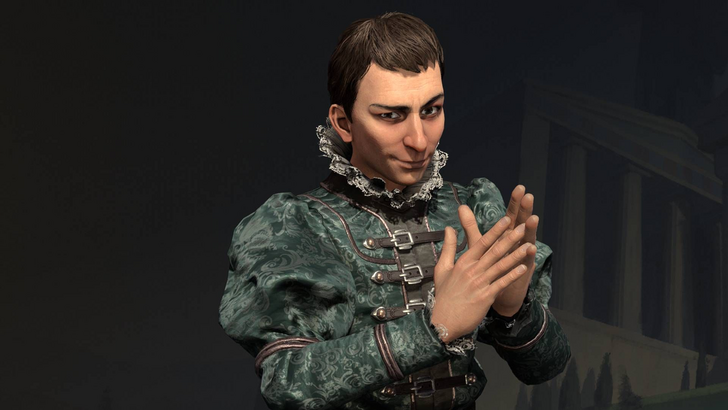 Civilization VII's Deluxe Edition launched recently, and online discussions are already buzzing about its user interface (UI) and other shortcomings. But is the UI truly that bad? Let's delve into the game's UI elements and assess whether the criticism is justified.
Civilization VII's Deluxe Edition launched recently, and online discussions are already buzzing about its user interface (UI) and other shortcomings. But is the UI truly that bad? Let's delve into the game's UI elements and assess whether the criticism is justified.
← Return to Sid Meier's Civilization VII main article
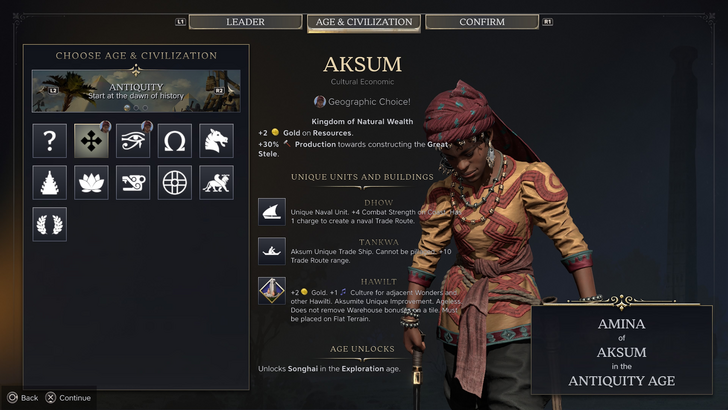 Early access players of Civ 7's Deluxe and Founder's Editions are voicing concerns, particularly regarding the UI and missing quality-of-life features. Before jumping to conclusions, let's objectively evaluate the UI's effectiveness as a 4X game interface.
Early access players of Civ 7's Deluxe and Founder's Editions are voicing concerns, particularly regarding the UI and missing quality-of-life features. Before jumping to conclusions, let's objectively evaluate the UI's effectiveness as a 4X game interface.
 While some argue for objective 4X UI design standards, the reality is more complex. UI design depends heavily on the game's context, style, and goals. However, common elements contributing to effective 4X UIs have been identified. Let's use these elements to analyze Civ 7's UI.
While some argue for objective 4X UI design standards, the reality is more complex. UI design depends heavily on the game's context, style, and goals. However, common elements contributing to effective 4X UIs have been identified. Let's use these elements to analyze Civ 7's UI.
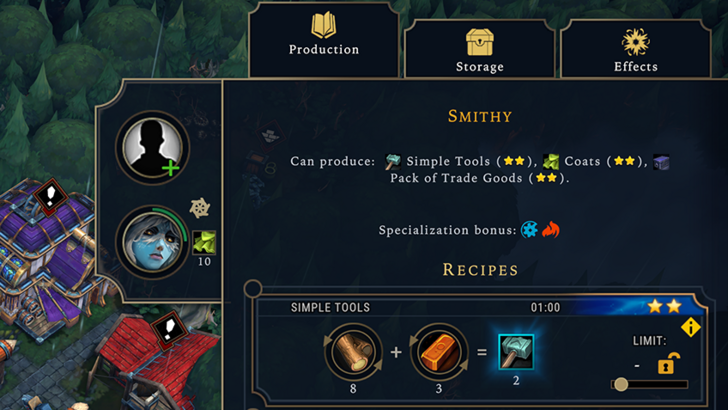 A good UI prioritizes important information. Frequently used resources and mechanics should be prominent, while less crucial features should be easily accessible. The UI shouldn't display everything at once, but organize information logically.
A good UI prioritizes important information. Frequently used resources and mechanics should be prominent, while less crucial features should be easily accessible. The UI shouldn't display everything at once, but organize information logically.
Against the Storm offers a strong example: building info menus use tabs to organize actions by frequency of use. Common actions are on the default tab, while less frequent ones are in subsequent tabs.
Civ 7's resource summary menu displays resource allocation, separating income, yields, and expenses. It's well-structured and collapsible. However, it lacks granular detail. While you see total resource production from Rural Districts, the specific district or hex isn't shown. Expense breakdowns are also limited. The UI functions, but more detail would improve it.
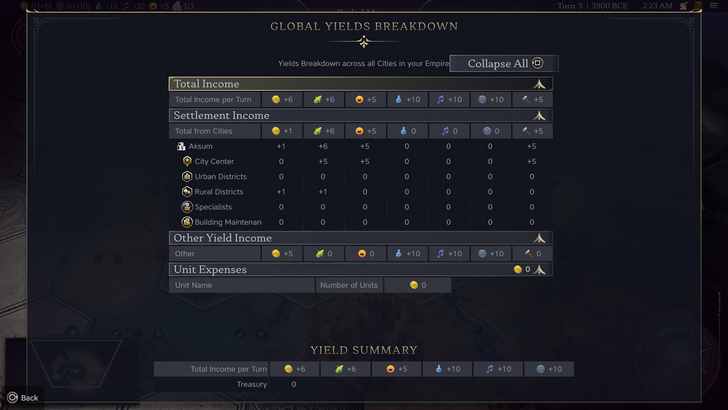
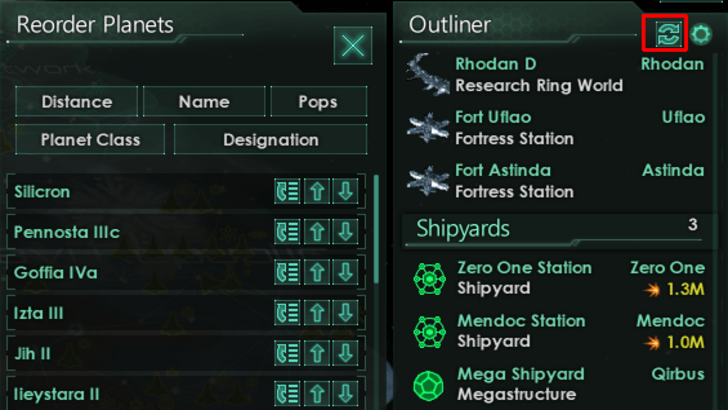 Effective visual indicators convey information quickly using icons, colors, and overlays, minimizing the need for text.
Effective visual indicators convey information quickly using icons, colors, and overlays, minimizing the need for text.
Stellaris' Outliner is an example, using icons to show ship status (transit, orbit, scanning).
Civ 7 uses iconography and numbers, but lacks some of Civ 6's lenses (appeal, tourism, loyalty). The absence of customizable map pins is also criticized. While not terrible, there's room for improvement.
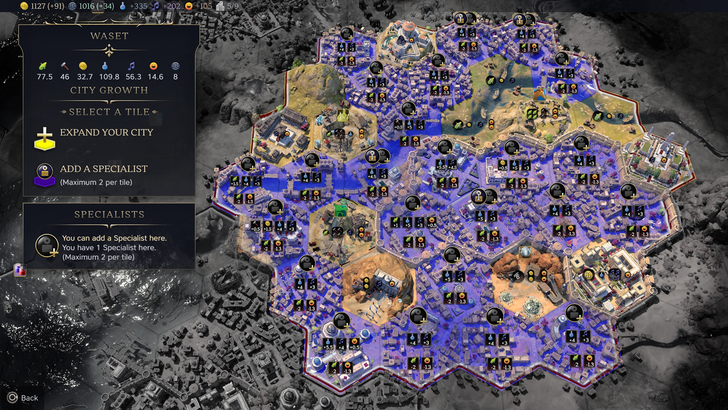
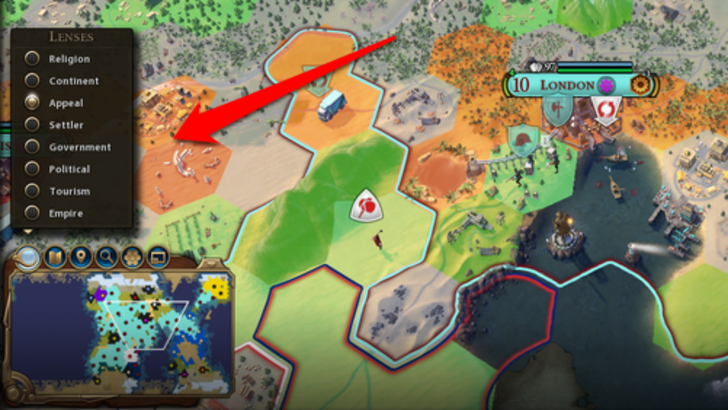 Search, filtering, and sorting are crucial for managing large amounts of information.
Search, filtering, and sorting are crucial for managing large amounts of information.
Civ 6's search function is excellent, allowing players to locate resources, units, and features on the map. Its Civilopedia also links to in-game elements.
Civ 7 lacks this crucial search function, a significant usability issue. This omission is a major drawback.
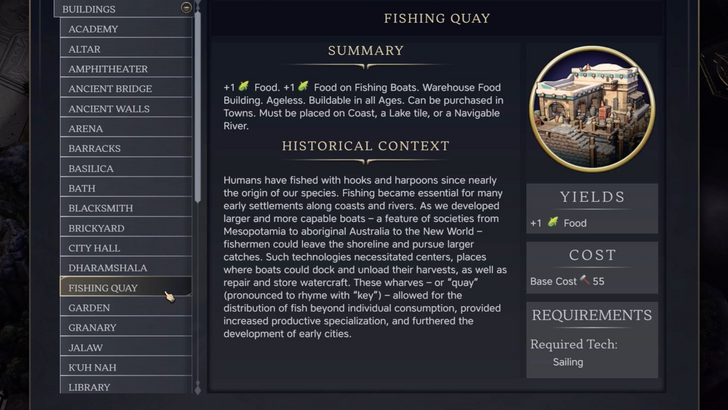
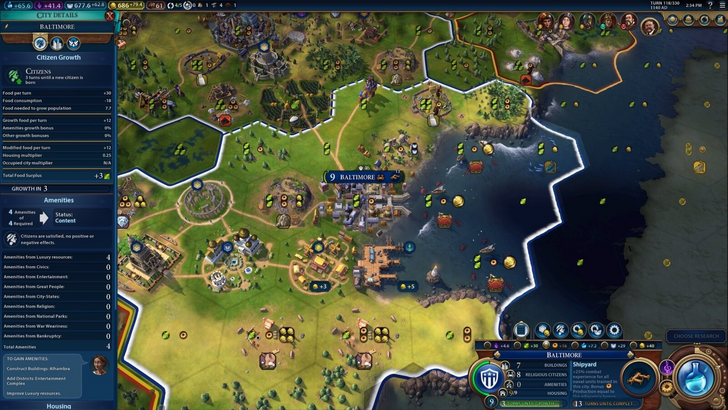 UI aesthetics and cohesiveness are vital. A poor UI can detract from the overall experience.
UI aesthetics and cohesiveness are vital. A poor UI can detract from the overall experience.
Civ 6's UI is praised for its dynamic, cartographical style, integrating seamlessly with the game's visuals.
Civ 7 adopts a minimalist, sleek design. While not unattractive, its subtler thematic approach is less immediately engaging for some players. Visual design is subjective, but the lack of immediate clarity has resulted in mixed opinions.
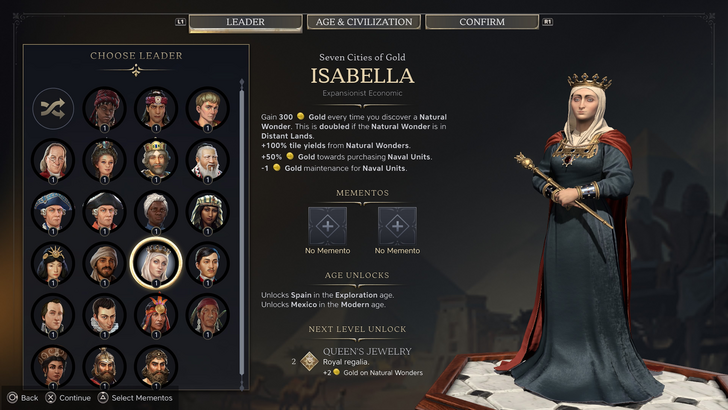
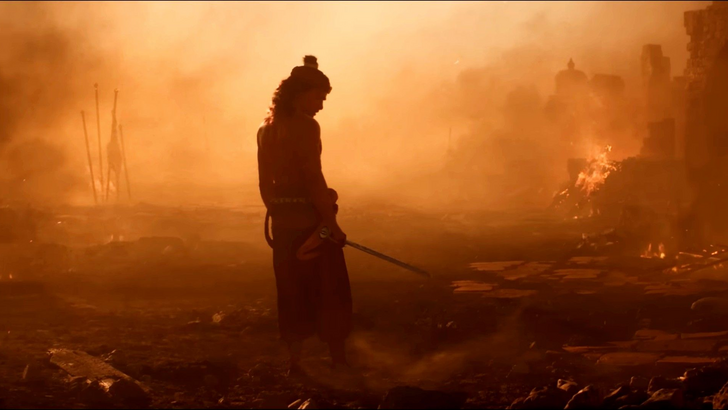 Civ 7's UI, while not perfect, isn't as bad as some claim. Key features are missing, especially the search function, but it's not game-breaking. Compared to other issues, the UI's shortcomings are relatively minor. While it may not match the visual appeal and efficiency of other 4X UIs, it has strengths. With updates and player feedback, it can improve significantly. The overall game's strengths compensate for the UI's imperfections.
Civ 7's UI, while not perfect, isn't as bad as some claim. Key features are missing, especially the search function, but it's not game-breaking. Compared to other issues, the UI's shortcomings are relatively minor. While it may not match the visual appeal and efficiency of other 4X UIs, it has strengths. With updates and player feedback, it can improve significantly. The overall game's strengths compensate for the UI's imperfections.
← Return to Sid Meier's Civilization VII main article

"Clair Obscur: Expedition 33 Hits 1 Million Sales in 3 Days"
Roblox Deep Descent: January 2025 Codes Revealed
How to Feed Villagers in Necesse
Ragnarok V: Returns Beginner's Guide - Classes, Controls, Quests, Gameplay Explained
Bitlife: How to Complete the Renaissance Challenge
"Ōkami 2: Capcom, Kamiya, and Machine Head Discuss Sequel in Exclusive Interview"
Bahiti Hero Guide: Mastering the Epic Marksman in Whiteout Survival
Top 10 Liam Neeson Films Ranked
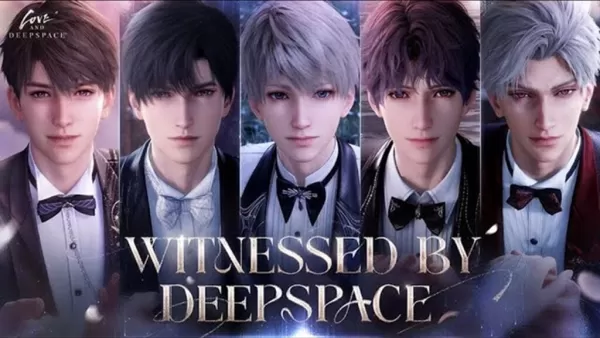
New Love and Deepspace Event: Witnessed by Deepspace
Dec 14,2025
Minecraft's Visual Refresh Rolls Out Now (45字符,控制在50字符内。关键词"Minecraft"前置,"Visual Refresh"替换原词更简洁,"Rolls Out Now"强调新闻时效性)
Dec 14,2025

Yu-Gi-Oh! Master Duel\'s Shadow Duelist revealed as Dylan Sprouse
Dec 13,2025

Pokémon Go Adds Hyper Training, Ancient Pass
Dec 13,2025

LEGO Book Nook Sets Launch in June 2025
Dec 13,2025